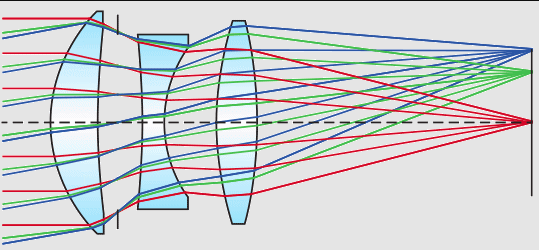Aspheric Optics Processing: Advancements in Precision Manufacturing

Introduction to Aspheric Optics
Aspheric optics, characterized by surfaces that deviate from simple spherical shapes, offer significant advantages in reducing aberrations and improving the performance of optical systems. These optics are crucial in applications ranging from high-resolution imaging and laser systems to consumer electronics and medical devices. However, the complexity of aspheric surfaces presents challenges in their processing and manufacturing. Advanced techniques aspheric optics processing and technologies have been developed to produce high-quality aspheric optics with the precision required for demanding applications.
The Importance of Aspheric Optics
Traditional spherical optics can introduce various aberrations, such as spherical aberration, which degrade the quality of images or beams. Aspheric lenses and mirrors are designed to correct these aberrations, providing sharper focus, improved image quality, and enhanced optical performance. This makes them essential in applications where precision and clarity are paramount, such as in telescopes, cameras, microscopes, and laser systems.
Challenges in Aspheric Optics Processing
The processing of aspheric optics is more complex than that of spherical optics due to the non-uniform curvature of aspheric surfaces. This complexity presents several challenges:
- Precision Machining:
- Achieving the desired aspheric shape requires highly precise machining processes. Traditional grinding and polishing techniques are often insufficient for the fine control needed to produce aspheric surfaces, necessitating the use of advanced methods.
- Surface Quality:
- The surface quality of aspheric optics is critical to their performance. Even minor imperfections or deviations from the intended shape can lead to significant optical aberrations. Achieving high surface accuracy and smoothness is essential.
- Material Selection:
- The choice of material for aspheric optics affects the processing techniques used. Materials like glass, quartz, and certain plastics each have different properties that influence the machining, polishing, and coating processes.
Advanced Techniques in Aspheric Optics Processing
To address the challenges of aspheric optics processing, several advanced techniques have been developed:
1. Diamond Turning:
- Diamond turning is a precision machining process that uses a diamond-tipped tool to create aspheric surfaces. This technique is capable of producing optics with high accuracy and surface quality. Diamond turning is particularly effective for materials like metals and certain plastics but can also be used for some types of glass.
Read also: The Role of Technology in Shaping India’s Economic Future
2. Computer-Controlled Polishing (CCP):
- CCP is a technique that uses computer-controlled machinery to polish aspheric surfaces to the desired shape and finish. This method allows for fine adjustments and precise control over the polishing process, resulting in optics with minimal surface errors.
3. Ion Beam Figuring (IBF):
- IBF is a finishing technique that uses a focused ion beam to remove material from the surface of an optic. This process can correct small surface errors and achieve extremely high levels of precision. IBF is often used as a final step in the processing of aspheric optics.
4. Molding and Replication:
- For high-volume production, molding and replication techniques can be used to produce aspheric optics. These methods involve creating a master optic that is then used to mold or replicate the aspheric shape onto other materials. While this approach is less flexible than machining, it is cost-effective for large-scale production.
Applications of Aspheric Optics
The processing of aspheric optics enables their use in a wide range of applications:
- High-Resolution Imaging:
- Aspheric lenses are essential in cameras, microscopes, and telescopes, where they help to eliminate spherical aberrations and provide sharp, clear images.
- Laser Systems:
- In laser systems, aspheric optics are used to focus and shape laser beams with high precision. This is critical in applications such as laser cutting, medical lasers, and scientific research.
- Consumer Electronics:
- Aspheric lenses are commonly found in consumer electronics, including smartphones and compact cameras, where they contribute to improved image quality in small, lightweight packages.
- Medical Devices:
- In medical imaging devices, aspheric optics are used to enhance the clarity and accuracy of images, leading to better diagnostic outcomes.
Future Trends in Aspheric Optics Processing
The demand for aspheric optics continues to grow, driven by advancements in technology and the need for higher performance in optical systems. Future trends in aspheric optics processing include:
- Automation and AI Integration:
- The integration of automation and artificial intelligence (AI) into processing techniques is expected to improve efficiency and precision. AI algorithms can optimize machining and polishing processes in real-time, reducing errors and improving yield.
- Advanced Materials:
- The development of new materials with better optical and mechanical properties will expand the possibilities for aspheric optics. These materials may offer improved durability, lower costs, or better performance in specific applications.
- Miniaturization:
- As devices become smaller and more compact, the need for miniaturized aspheric optics will increase. Advances in processing techniques will be required to produce high-quality optics at smaller scales.
Conclusion
Aspheric optics processing is a critical field that enables the production of high-performance optical components for a wide range of applications. The challenges associated with processing aspheric surfaces require advanced techniques and precision manufacturing. As technology continues to evolve, the processing of aspheric optics will likely see further innovations, leading to even higher levels of precision and efficiency in the production of these essential optical elements. Understanding and leveraging the latest advancements in aspheric optics processing is key to staying at the forefront of optical technology.




